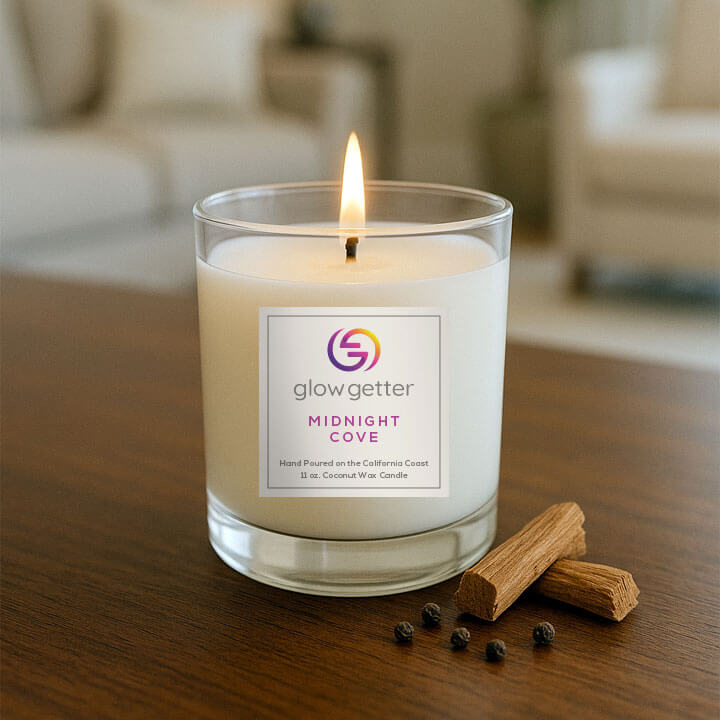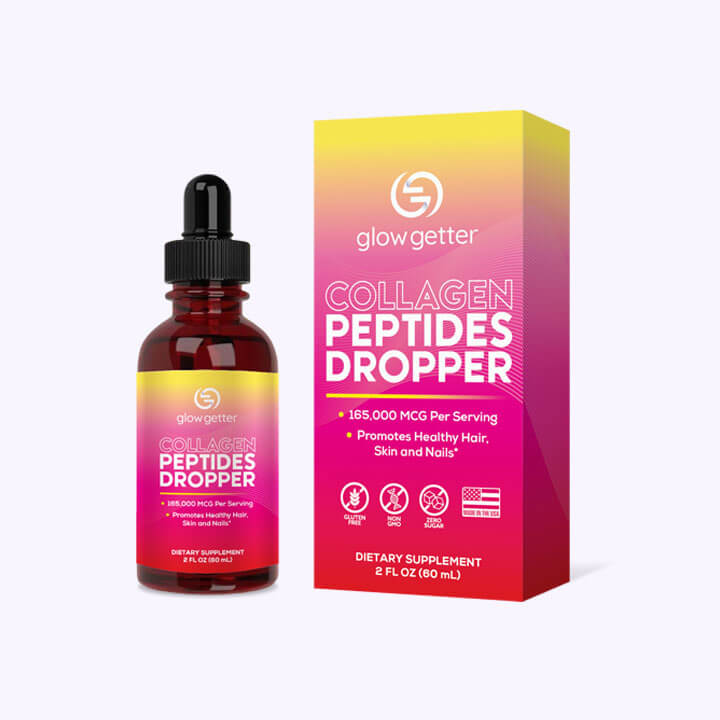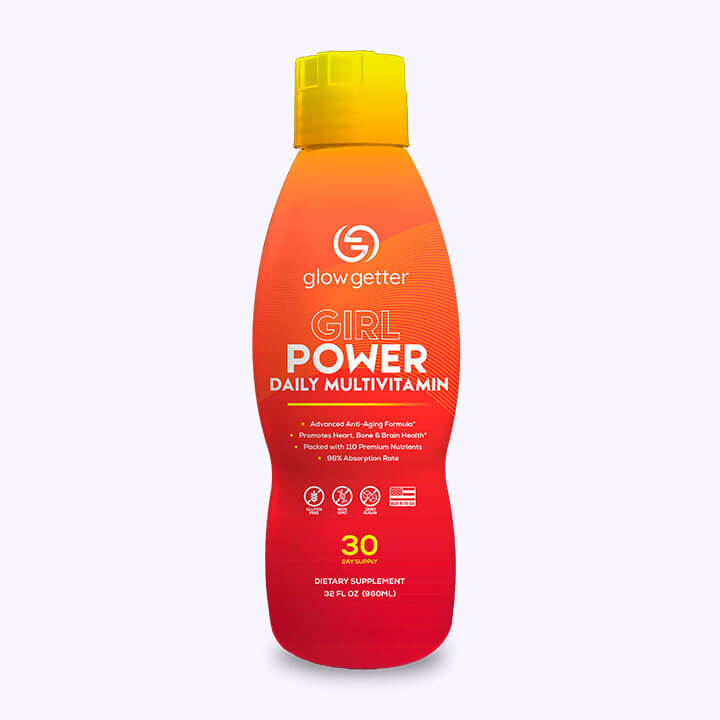Welcome to Glow Getter, by accessing our website, www.glowgetter.com website (the “Website”) of GC Operating, LLC (the “Company” or “us” or “we”), you (the “User”) have requested access to the Website and other mobile applications, the Services (defined below) that we provide through the Website and information, images, graphics, data, text, files, links, photographs, graphics, audio, video, messages, software, messages, communications, content, organization, design, compilation, magnetic translation, digital conversion, HTML, XML, Java code and other content related to the Website as well as in e-mail, text and other electronic messages between you and our Website and through mobile and desktop applications of the Company that you may download or otherwise access through our Website, which may provide dedicated browser and/or non-browser-based interaction between you and this Website (collectively “Content”). It does not apply to information collected by us offline or through any other means, including on any other website or software application or device operated by the Company (including our affiliates and subsidiaries) or through any other third-party providing services through the Company; or any other third party (including our affiliates and subsidiaries), including through any application or content (including advertising) that may link to or be accessible from or on the Website. Please carefully read these terms and conditions of use of the Website and the Content (the “Terms of Use”). Your access and use of the Website and the Content is conditioned on your acceptance and agreement, without modification to these Terms of Use. Please note that other portions of the Website may contain additional and/or different terms and conditions of use.
Accessing and Correcting Information
We may provide you with a variety of resources, such as news and information about our Company, your account information, the ability to communicate electronically with the Company, and access to products, services and information available from time to time on or through the Website (the “Services”). We reserve the right in our sole and absolute discretion to terminate, modify or suspend your access to the Website, Content or Services at any time (for any reason, or for no reason). In particular, and without limitation, we may terminate, modify or suspend your access to the Website, Content and/or Services upon your non-compliance with these Terms of Use, and, if you are a customer of the Company’s Glow Getter program, the terms of the Glow Getter (the “Glow Getter Terms”) or if you violate our rights or the rights of any other party.
Privacy
Our Privacy Policy is incorporated into, and made a part of, these Terms of Use.
Representations
You represent and warrant that (i) you are at least 18 years of age, (ii) your use of the Website and Content is legal in, and does not violate any laws or rules of, the jurisdictions in which you reside or from which you use or otherwise access the Website, (iii) all information (if any) provided by you to us is correct, (iv) you possess the legal right and ability to enter into these Terms of Use, (v) your use of the Website and Content shall be in accordance with these Terms of Use, (vi) your use of the Website and Content shall be in accordance with all applicable laws and regulations, (vii) you are capable of assuming, and do assume, any risks related to the use of the Website and Content, and (viii) you understand and accept the terms, conditions and risks relating to the use of the Website and Content.
Intellectual Property Rights
Unless otherwise indicated, our Website and the Content are property of the Company, its affiliates, its licensors or other third parties and are protected under applicable copyright, trademark, patent and other intellectual property rights and laws. Except as specifically allowed in these Terms of Use, the copying, redistribution, use or publication by you of the Content is strictly prohibited. No ownership or other interest or license in or to any patent, copyright, trademark, trade secret and other intellectual property rights or to the Content is being granted, assigned or transferred in these Terms of Use or by reason of your access to, and use of, the Website, Content or Services.
All trademarks, service marks, trade names and copyrights displayed on the Website or in the Content are proprietary to us or their respective owners. You acquire no rights or licenses in or to any trademarks, service marks, trade names or copyrights displayed on the Website.
Access to the Website and Content and use of our Services are being provided for your business use only. You may not reproduce, republish, distribute, assign, sublicense, retransmit, sell or prepare derivative works of the Website or Content, or resell or make our Services available to others. All rights in and to the Website and Content not expressly granted in these Terms of Use remain in us or in our licensors.
Protected Areas
In the event access to the Website, or a portion thereof is limited, requiring a user ID and password (“Protected Areas”), you agree to access Protected Areas using only your user ID and password as provided to you by the Company. You agree that you will be responsible for any and all statements made, and acts or omissions that occur, through the use of your password. You agree to protect the confidentiality of your user ID and password, and not to share or disclose your user ID or password to any third party. You agree that you are fully responsible for all activity occurring under your user ID. If you have any reason to believe or become aware of any loss, theft or unauthorized use of your password, notify the Company immediately. The Company may assume that any communications the Company receive under your password have been made by you unless the Company receives notice otherwise. Your access to the Website may be revoked by the Company at any time with or without cause.
Confidential and Proprietary Information
During the course of your use of the Website, you may have access to information which is confidential and proprietary to us or our suppliers, licensors or other similar entities. The term “Proprietary Information” means any information or material which is proprietary and confidential to us or our suppliers, licensors or other similar entities, and includes any of the following information and material licensed, owned or developed by any such party or its agents: (i) business records and plans; (ii) business information; (iii) product formulation and specifications; (iv) marketing plans and strategies; (v) financial statements; (vi) customer lists and financial information, (vii) customer lists and records; (viii) technical information; (ix) inventions; (x) product design; (xi) pricing structure; (xii) discounts; (xiii) computer programs, source and/or object codes, and software; and (xiv) any other such proprietary information. You understand and acknowledge that the Proprietary Information is owned, obtained or licensed by us or our suppliers, licensors or other similar entities by the investment of significant time, effort and expense, and that the Proprietary Information is a valuable, special and unique asset of ours or our suppliers, licensors or other similar entities, which provides us with a significant competitive advantage. Therefore, you must hold in confidence and not disclose the Proprietary Information to any person or entity without our prior written consent. You shall be liable for any and all breaches of these Terms of Use and any unauthorized use or disclosure of Proprietary Information. If you become compelled by applicable law, regulation or legal process to disclose any of the Proprietary Information, you shall promptly provide us with notice in order for us to seek a protective order or other appropriate remedy. Further, if you become compelled to disclose any of the Proprietary Information, you must disclose only that portion of the Proprietary Information you are legally required to disclose as confirmed by a legal opinion of your counsel at your expense. Upon our request, you shall return all materials containing Proprietary Information.
Indemnification
You shall indemnify, defend and hold harmless us, our affiliates and our licensors, owners, officers, directors, employees, subcontractors, information providers, suppliers, attorneys, agents, parents, subsidiaries and affiliated entities, and the owners, officers, directors, employees, subcontractors, attorneys, agents, parents, subsidiaries and affiliated entities of each of them (collectively, “our Affiliated Parties”) from any liability, loss, claim, damages, suit, judgment, cost or expense, including, but not limited to, reasonable attorneys’ fees and court costs, related to or arising out of your (i) failure to comply with any of these Terms of Use, (ii) violation of applicable law, (iii) use of the Website or Content; or (iv) access by anyone else using your user ID and password. We have no duty to reimburse, defend, indemnify or hold you harmless from any liability, loss or damage resulting from, relating to, or arising out of, these Terms of Use, the Website or your access to or use of the Website or Content.
Reliance on Information Posted
The information presented on or through the Website is made available solely for general information purposes. We do not warrant the accuracy, completeness or usefulness of this information. Any reliance you place on such information is strictly at your own risk. We disclaim all liability and responsibility arising from any reliance placed on such materials by your or any other visitor to the Website, or by anyone who may be informed of any of its contents.
Disclaimers
WE MAKE NO REPRESENTATIONS ABOUT THE SUITABILITY, RELIABILITY, AVAILABILITY, TIMELINESS, AND ACCURACY OF THE WEBSITE, THE SERVICES OR THE CONTENT CONTAINED ON THE WEBSITE FOR ANY PURPOSE. TO THE MAXIMUM EXTENT PERMITTED BY APPLICABLE LAW, THE WEBSITE AND ALL SUCH CONTENT, SERVICES, SOFTWARE AND PRODUCTS ARE PROVIDED “AS IS,” “WITH ALL FAULTS,” AND “AS AVAILABLE.” WE DISCLAIM ALL WARRANTIES, EXPRESS AND IMPLIED, ARISING OUT OF, OR IN CONNECTION WITH, THE WEBSITE, SERVICES AND CONTENT, INCLUDING, BUT NOT LIMITED TO, THE WARRANTIES OF NON-INFRINGEMENT, MERCHANTABILITY AND FITNESS FOR A PARTICULAR PURPOSE AND THOSE ARISING BY LAW, STATUTE, USAGE OF TRADE OR COURSE OF DEALING AND ANY LIABILITY WITH REGARD TO THE WEBSITE, CONTENT AND SERVICES AND ANY ACTIONS RESULTING FROM YOUR PARTICIPATION IN ANY SERVICE.
YOUR USE OF THE WEBSITE, SERVICES AND CONTENT IS AT YOUR SOLE RISK. ALTHOUGH OUR CONTENT MAY BE UPDATED FROM TIME TO TIME, IT MAY BE OUT OF DATE AND/OR MAY CONTAIN INACCURACIES OR TYPOGRAPHICAL ERRORS. WE ARE NOT RESPONSIBLE FOR YOUR INABILITY OR FAILURE (FOR ANY REASON) TO ACCESS THE WEBSITE OR CONTENT OR OTHERWISE USE OR RECEIVE INFORMATION OR SERVICES FROM OR REGARDING THE WEBSITE, CONTENT, OR YOUR PURCHASES FROM US. WE DO NOT WARRANT THAT THE WEBSITE, PRODUCTS OR SERVICES WILL BE COMPATIBLE WITH ANY HARDWARE OR SOFTWARE SYSTEMS OR THAT THE WEBSITE OR ANY SERVICES WILL BE UNINTERRUPTED OR ERROR FREE.
WE ARE NOT RESPONSIBLE OR LIABLE FOR MAINTAINING ANY CONSUMER DATA OR FOR THE DELETION, CORRUPTION, DESTRUCTION, DAMAGE, LOSS OR FAILURE OF ANY CONSUMER DATA OR FOR ANY THIRD-PARTY ACCESS TO ANY CONSUMER DATA.
FURTHER, WE AND OUR LICENSORS MAKE NO REPRESENTATIONS OR WARRANTIES THAT THE CONTENT OR THE SERVICES OR THE MATERIALS AND TECHNOLOGY AVAILABLE ON OR THROUGH THE WEBSITE ARE APPROPRIATE OR AVAILABLE FOR USE IN ALL GEOGRAPHIC LOCATIONS. IF YOU USE THE WEBSITE, THE SERVICES OR ANY MATERIALS OR TECHNOLOGY AVAILABLE ON OR THROUGH THE WEBSITE OUTSIDE THE UNITED STATES OF AMERICA, YOU ARE SOLELY RESPONSIBLE FOR COMPLIANCE WITH ALL APPLICABLE LAWS, INCLUDING WITHOUT LIMITATION, EXPORT AND IMPORT AND PRIVACY REGULATIONS OF OTHER COUNTRIES. NEITHER WE NOR ANY THIRD-PARTY PROVIDERS, PARTNERS OR AFFILIATES WARRANT THAT THE WEBSITE, ITS SERVERS OR ANY E-MAIL SENT FROM THE WEBSITE OR ANY THIRD-PARTY PROVIDERS, PARTNERS OR AFFILIATES ARE FREE OF VIRUSES OR OTHER HARMFUL COMPONENTS.
WE WILL NOT BE LIABLE FOR ANY LOSS OR DAMAGE CAUSED BY A DISTRIBUTED DENIAL-OF-SERVICE ATTACK, VIRUSES OR OTHER TECHNOLOGICALLY HARMFUL MATERIAL THAT MAY INFECT YOUR COMPUTER EQUIPMENT, COMPUTER PROGRAMS, DATA OR OTHER PROPRIETARY MATERIAL DUE TO YOUR USE OF (A) THE WEBSITE, THE CONTENT, OR ANY SERVICES OBTAINED THROUGH THE WEBSITE; OR (B) TO YOUR DOWNLOADING OF ANY CONTENT POSTED ON IT, OR ON ANY WEBSITE LINKED TO IT.
WE MAKE NO WARRANTY OR REPRESENTATION AS TO THE LEVEL OF SUCCESS, IF ANY, INDIVIDUALS MAY ACHIEVE BY USING ANY OF OUR PRODUCTS OR SERVICES. INDIVIDUAL RESULTS MAY VARY AND DEPEND ON MANY FACTORS INCLUDING AN INDIVIDUAL’S SPECIFIC FINANCIAL SITUATION, EFFORTS AND ACTIONS. YOU SHOULD SEEK THE ADVICE OF QUALIFIED PROFESSIONALS, SUCH AS AN ACCOUNTANT, ATTORNEY AND/OR PROFESSIONAL ADVISOR FOR SPECIFIC ADVICE FOR YOUR BUSINESS.
Reliance on Information Posted
The information presented on or through the Website is made available solely for general information purposes. We do not warrant the accuracy, completeness or usefulness of this information. Any reliance you place on such information is strictly at your own risk. We disclaim all liability and responsibility arising from any reliance placed on such materials by your or any other visitor to the Website, or by anyone who may be informed of any of its contents.
Use of the Content and Services
You may not copy, transmit, distribute, sell or publish any or all of the Website, Content or Services, without our prior, express and written consent. In your use of the Content, such as printing it, you may not remove or alter, or cause to be removed or altered, any notice, mark, or legend in or on the Content, including, but not limited to, copyright and trademarks notices and disclaimers. You may not create derivative works of the Website or Content. In connection with your access to, and/or use of, the Website and Content, you agree not to:
- Use the Website, Content or Services, in whole or in part, except as expressly provided in these Terms of Use or use the Website or Content for any purpose that is unlawful, immoral or otherwise prohibited by these Terms of Use or any applicable local, state, federal or international law, rule or regulation;
- Use the Website, Content or Services in any manner that could damage, disable, overburden or impair the Website, Content or Services, or interfere with any other user’s use and enjoyment of the Website, Content or Services;
- Obtain, or attempt to obtain, any materials, information or other Content through any means not intentionally made available or provided for through the Website;
- Violate or attempt to violate the security of the Website or circumvent or attempt to circumvent, any security feature of the Website, including (i) accessing data not intended for such user or logging onto a server or an account which the user is not authorized to access; (ii) attempting to probe, scan or test the vulnerability of a system or network or to breach security or authentication measures without proper authorization; or (iii) accessing or using the Website or any portion thereof without authorization or in violation of these Terms of Use;
- Modify, delete, decompile, disassemble or reverse engineer the Website, Content or Services in any way whatsoever;
- Upload, e-mail, conduct or otherwise transmit to or through the Website or Services, any advertising, promotional, or other unauthorized communication, including, without limitation, sweepstakes, contests, junk mail, surveys, unsolicited e-mail, spam, chain letters or pyramid schemes;
- Upload, post, email or otherwise transmit any material that contains “trojan horses,” “worms,” software viruses, logic bombs or any other computer code, files, or programs designed to or that might interrupt, destroy, interfere, damage or limit the functionality of the Website, Content or Services, or any computer software or hardware or telecommunications equipment;
- Use any automated means, including, but not limited to, electronic “spiders,” “robots,” or “crawlers,” to access, copy or download data on the Website, deep link to any feature or content on the Website, by-pass robot exclusion headers or other measures the Company may use to prevent or restrict access to any Website;
- Incorporate data from any of our databases into any emails or other “white pages” products or services, whether browser-based, based on proprietary client-side applications or web-based, without our prior, express and written consent;
- Defame, abuse, harass, stalk, threaten or otherwise violate the legal rights (such as rights of privacy and publicity) of others;
- Use the Services except as expressly provided in these Terms of Use or publish, transmit, copy, reproduce, e-mail, post, upload, distribute or disseminate (or use the Website or Content to do any of the foregoing with respect to) any inappropriate, profane, defamatory, infringing, obscene, indecent or unlawful topic, name, material or information;
- Upload files that contain software or other material protected by intellectual property laws (or by rights of privacy of publicity) unless you own or control the rights thereto or have received all necessary consents;
- Advertise or offer to sell or buy any goods or services for any business purpose, unless such Service specifically allows such messages;
- Falsify or delete any author attributions, legal or other proper notices or proprietary designations or labels of the origin or source of software or other material contained in a file that is uploaded;
- Violate any code of conduct or other guidelines that may be applicable for any particular Service or any other portion of the Website or Content;
- Harvest or otherwise collect information about others, including, but not limited to, e-mail addresses, without their prior, express written consent;
- Violate any applicable federal, state, local or international laws, rules or regulations;
- Use the Services if you are located in a country embargoed by the U.S. or are on the U.S. Treasury Department’s list of Specially Designated Nationals;
- Share your password, let anyone else access your account or do anything else that might jeopardize the security of your account; or
- Attack the Website via a denial-of-service attack or a distributed denial-of-service attack.
We have no obligation to monitor the Services, the Website or the Content. However, we reserve the right to review materials posted to a Service and to remove any materials in our sole discretion. We assume no liability relating to our monitoring acts or omissions.
We reserve the right at all times to disclose any information as necessary to satisfy any applicable law, rule, regulation, legal process or governmental request, or to edit, refuse to post or to remove any information or materials, in whole or in part, in our sole discretion.
Materials uploaded to a Service may be subject to posted limitations on usage, reproduction, and/or dissemination. You are responsible for adhering to such limitations if you download the materials.
Information Provided to Us
Subject to the Privacy Policy, any and all information, data, sound, photographs, videos, and works of authorship that you provide to us, including all comments and suggestions (collectively “Visitor Generated Content”), you grant us a non-exclusive, transferable, assignable, sublicenseable, perpetual, irrevocable, worldwide, royalty-free and fully paid-up license to use, possess, copy, distribute, sell, sublicense, disclose, display publicly, perform, modify, make, have made, import, export and prepare derivative works of such Visitor Generated Content through multiple tiers of distribution in any and all media now known or hereafter invented.
No compensation will be paid with respect to the use of your Visitor Generated Content, as provided herein. We are under no obligation to post or use any Visitor Generated Content you may provide and may remove any Visitor Generated Content at any time, in our sole discretion.
By posting, uploading, inputting, providing or submitting your Visitor Generated Content, you represent and warrant that you own or otherwise control all rights to your Visitor Generated Content, including, but not limited to, all rights necessary for you to provide, post, upload, input or submit the Visitor Generated Content.
You are legally responsible for all Visitor Generated Content uploaded, posted or stored through your use of the Services. You may not use a false e-mail address or other identifying information, impersonate any person or entity or otherwise mislead as to the origin of any content. You may not upload commercial content onto the Website.
Our Services may include bulletin board services, chat areas, news groups, forums, communities, personal web pages, calendars and/or other messaging facilities designed to enable you to upload or distribute information, materials and other content or to communicate with the public at-large or with a group. You are solely responsible for all information, images, graphics, data, text, files, links, software, messages, communications and other materials (the “End User Content”) that you (or someone using your account) publicly or privately publish, post, distribute, display, disseminate or otherwise transmit via the Website. We do not control or necessarily screen or monitor the End User Content posted on the Website and, as such, we do not guarantee the accuracy, integrity or quality of such End User Content. We reserve the right, in our sole and absolute discretion, to edit, delete or record any End User Content appearing on the Website. You understand that entering or using the Website may expose you to End User Content that is offensive, indecent or objectionable to you. You agree to use the Services only to post, send and receive messages and material that are proper and related to the particular Service. You grant to us a limited non-exclusive, transferable, assignable, sublicenseable, irrevocable, worldwide, royalty-free and fully paid-up license to use, possess, copy, distribute, sell, sublicense, disclose, display publicly, perform, modify, make, have made, import, export and prepare derivative works of the End User Content for purposes of providing to you the Services for which the End User Content was provided.
Special Notice Regarding Copyright Infringement
You may not use our Services to infringe on any copyrights. We may terminate our Services to anyone who we become aware is repeatedly using our Services in violation of copyright law. IT IS YOUR SOLE RESPONSIBILITY TO USE THE SERVICES IN COMPLIANCE WITH ALL APPLICABLE COPYRIGHT LAWS.
We reserve the right to take any and all action we deem appropriate if we become aware of conduct that we believe does not conform to the requirements of any agreement pursuant to which you use our Services, any software that utilizes them, these Terms of Use or applicable law.
Limitation of Liability
TO THE MAXIMUM EXTENT PERMITTED BY LAW, WE AND OUR AFFILIATED PARTIES SHALL HAVE NO LIABILITY WHATSOEVER FOR YOUR USE OF ANY CONTENT OR OTHER INFORMATION OR SERVICE RELATED TO THE WEBSITE AND SHALL NOT BE LIABLE FOR ANY DIRECT, INDIRECT, SPECIAL, INCIDENTAL OR CONSEQUENTIAL DAMAGES (INCLUDING, BUT NOT LIMITED TO, DAMAGES FOR LOSS OF BUSINESS, LOSS OF PROFITS, OR LITIGATION), (I) ARISING FROM ANY DECISION MADE OR ACTION TAKEN BY YOU IN RELIANCE UPON THE CONTENT OR OUR PRODUCTS OR SERVICES, (II) ARISING OUT OF OR IN ANY WAY CONNECTED WITH THE USE OR PERFORMANCE OF THE WEBSITE, SERVICES OR CONTENT, OR WITH THE DELAY OR INABILITY TO USE THE WEBSITE, CONTENT OR SERVICES, OR FROM THE USE OR MISUSE OF ANY INFORMATION, SOFTWARE, PRODUCTS, SERVICES, RELATED GRAPHICS OR CONTENT OBTAINED THROUGH THE WEBSITE, (III) ANY INCORRECT OR MISSING INFORMATION OR DATA, OR (IV) OTHERWISE ARISING OUT OR RESULTING FROM LOSS OF YOUR DATA OR INFORMATION, WHETHER BASED ON BREACH OF CONTRACT, BREACH OF WARRANTY, TORT (INCLUDING, BUT NOT LIMITED TO, NEGLIGENCE) OR OTHERWISE, EVEN IF ADVISED OF THE POSSIBILITY OF SUCH DAMAGES.
WE ARE NOT RESPONSIBLE FOR INTERRUPTED, INACCESSIBLE OR UNAVAILABLE NETWORKS, SERVERS, SATELLITES, INTERNET SERVICE PROVIDERS, WEBSITES OR OTHER CONNECTIONS, OR FOR MISCOMMUNICATIONS, FAILED, JUMBLED, SCRAMBLED, DELAYED OR MISDIRECTED COMPUTER, TELEPHONE OR CABLE TRANSMISSIONS, OR FOR ANY TECHNICAL MALFUNCTIONS, FAILURES OR DIFFICULTIES.
THE ABOVE LIMITATIONS AND EXCLUSIONS SHALL APPLY TO YOU TO THE FULLEST EXTENT THAT APPLICABLE LAW PERMITS, IN ALL ACTIONS OF ANY KIND, WHETHER BASED ON CONTRACT, TORT (INCLUDING, WITHOUT LIMITATION, NEGLIGENCE) OR ANY OTHER LEGAL OR EQUITABLE THEORY.
Links
The Website may, from time to time, contain links to or reference third-party websites, resources and advertisers (collectively, “Third-Party Sites”). Your linking to such Third-Party Sites is at your own risk. We are not responsible for the accuracy or reliability of any content, data, opinions, advice, statements or other information made on Third-Party Sites. We do not investigate, monitor or check Third-Party Sites for accuracy or completeness. We are not responsible for the availability of these Third-Party Sites, nor are we responsible for the aesthetics, appeal, suitability to taste or subjective quality of informational content, advertising, products or other materials made available on or through such Third-Party Sites. We are providing these links to you only as a convenience and may discontinue providing such links at any time, in our sole discretion, without notice to you. No endorsement of any third-party content, information, data, opinions, advice, statements, goods, services or products is expressed or implied by any information, material or content of any Third-Party Site contained in, referred to, included on, or linked from or to, the Website. If you decide to leave the Website and access these Third-Party Sites, you do so at your own risk. Under no circumstances shall we or any affiliated providers be held responsible or liable, directly or indirectly, for any loss, injury or damage caused or alleged to have been caused to you in connection with the use of, or reliance on, any content, information, data, opinions, advice, statements, goods, services or products available on such Third-Party Sites. You should direct any concerns to the respective Third-Party Site’s administrator or webmaster. Any links to Third-Party Sites do not imply that we are legally authorized to use any trademark, trade name, logo or copyright symbol displayed in or accessible through such links, or that any linked Third-Party Site is authorized to use any trademark, trade name, logo or copyright symbol of ours.
Linking to Our Corporate Site
If you are a member of the Glow Getter program, you may be granted a limited, non-exclusive right to create a hypertext link to the Website from the self-replicating website we provide to you, provided such link is in compliance with these Terms of Use, and the Glow Getter program. You cannot create an impression that any subdomain on the Website is part of your website. This limited right may be revoked at any time.
Modification
We reserve the right, in our sole discretion, to change, modify, add or remove portions of these Terms of Use at any time. You should read these Terms of Use periodically for any changes. If you use the Website after we post changes to these Terms of Use, you will be deemed to have accepted the changed Terms of Use.
Governing Law
These Terms of Use and the Privacy Policy shall be governed by, and construed and enforced in accordance with, the laws of the State of Texas, without regard to conflicts of law principles. Any cause of action by you with respect to the Website must be instituted within two years after the cause of action arose or be forever waived and barred. Any legal action concerning these Terms of Use shall be brought in the state and federal courts located in Dallas County, Texas. The parties hereby consent to such jurisdiction and venue.
Relief Available for Violation
In the event of an actual or threatened violation of these Terms of Use, these Terms of Use may be enforced by injunctive relief or specific performance without proof of actual damages but upon proof of all other requirements for the granting of such relief, in addition to any and all other available remedies.
Class Action Waiver
Any action brought by you must be in your individual capacity only and not as a class action or other representative action, and you expressly waive your right to file a class action or seek relief on a class basis.
Miscellaneous
The provisions of these Terms of Use are severable, and in the event any provision of these Terms of Use is determined to be invalid or unenforceable, such invalidity or unenforceability shall not in any way affect the validity or enforceability of the remaining provisions. Our waiver of a breach of any provision of these Terms of Use by you shall not operate or be construed as a waiver by us of any subsequent breach by you.
The provisions of these Terms of Use addressing disclaimers of representations and warranties, indemnity obligations, intellectual property and governing law, shall survive the termination of these Terms of Use.
These Terms of Use do not limit any rights or remedies that we or our suppliers, licensors, or other similar entities may have under trade secret, copyright, patent, trademark or other laws.
These Terms of Use, and our Privacy Policy, and any end user click-through agreements contained on the Website and, if you are a customer of the Company’s Glow Getter program, then the Glow Getter Terms constitute the entire agreement between us with respect to your use of the Website, and supersede all previous written or oral agreements. No waiver by us of any breach or default hereunder shall be deemed to be a waiver of any preceding or subsequent breach or default. The section headings used herein are for convenience only and shall not be given any legal import.
A printed version of these Terms of Use and of any notice given in electronic form shall be admissible in any judicial or administrative proceedings based upon, or relating to, these Terms of Use to the same extent and subject to the same conditions as other business documents and records originally generated and maintained in printed form. It is the express wish of the Company that these Terms of Use and all related documents be drawn up in English as spoken in the United States.
If you have any questions about these Terms of Use, contact us at [email protected].
BY USING THE WEBSITE, YOU ACKNOWLEDGE THAT YOU HAVE READ THESE TERMS OF USE, UNDERSTAND THEM AND AGREE TO BE BOUND BY ALL THE PROVISIONS HEREIN, AS AMENDED FROM TIME TO TIME.
These Terms of Use were last revised on January 1, 2025.
Copyright © 2025 GC Operating, LLC. All rights reserved.














